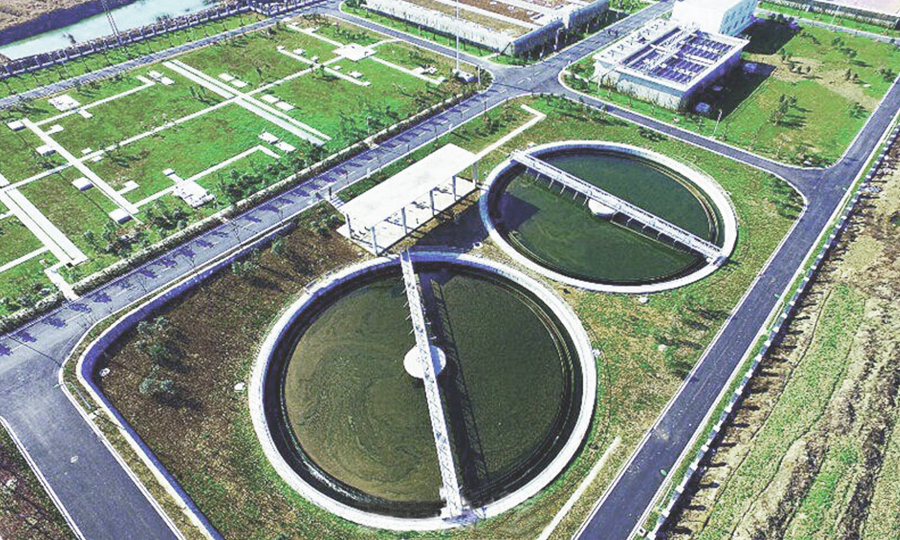 Drying Technology
Drying Technology
Keywords: sludge treatment、sewage treatment
Research on the application of urban domestic sludge drying technology and methods
Sludge is a by-product of sewage treatment, accounting for 0.3%~0.5% of the total sewage, but the treatment cost of sludge is as high as 30%~40%. Comprehensive analysis shows that the management cost and investment cost of sludge treatment can reach the total investment. more than 50%. There are many difficulties in the treatment of sludge, such as high water content, many microorganisms, existence of parasite eggs, etc. If not carefully treated, it may induce secondary pollution. Nowadays, the country is paying more and more attention to the ecological environment, and the treatment of urban domestic sludge has received more attention, and more and more relevant workers have invested in research on it.Basic characteristics of sludge

physical characteristics. Sludge refers to various solid sediments produced in the process of water and muddy water treatment. During the process of water and muddy water precipitation, urban domestic sludge will form different aggregated products in water, which are distributed in various urban pipelines and are not Has a specific shape and is difficult to handle.
chemical characteristics. Domestic sludge is rich in microorganisms, not only organic matter, heavy metals, sediment, animals and plants, but also salt, parasite eggs, pathogenic microorganisms and other substances. The sludge is rich in a variety of trace elements, which can maintain the normal growth of plants. development and improve soil structure.
biological features. The solid costs in sludge are mainly organic residues, bacteria, inorganic particles, colloids, pharmaceuticals, etc. The components are complex, and trace elements with useful value include nitrogen, phosphorus, potassium and so on.
Calorific value feature. Although sludge contains many harmful substances, it also contains biological elements that can be used as nutrients, so it has the characteristics of combustion. Chemical incineration provides the basis.Status of sludge disposal
land use. When sludge is disposed of, land use treatment will be carried out, which is divided into direct and indirect. Direct land use is simple and convenient, and the cost is low, but it may leave environmental problems. There are certain disadvantages in direct utilization. It will be directly used as agricultural land, and the harmful substances in it are not conducive to the growth of crops. Indirect utilization of sludge is to apply sludge to farmland after certain treatment, which can provide necessary nutrients for crop growth and improve soil structure. Sanitary landfill. Sanitary landfill is a scientific innovation based on the most traditional sludge treatment method. This treatment method requires less investment and has a faster effect, and does not require too many technical requirements in the early stage. However, in the process of actual landfilling, because the urban sludge contains harmful substances, it will cause groundwater pollution; secondly, the rapid increase in sludge production due to the accelerated urbanization development leads to insufficient land resources; finally, methane may appear during landfilling, May cause explosion if not handled properly. Drop into the sea for processing. Marine landfilling is a simple and low-cost treatment method, but it may cause adverse effects on the marine environment, and it simply transfers the land-based problem to the sea. Sludge throwing into the sea has a huge impact on the marine ecological environment. Therefore, various countries strictly prohibit the throwing of urban sludge into the sea to avoid marine pollution.
Digestive treatment. Anaerobic digestion and aerobic digestion are the two main means of digestion technology. After high temperature treatment of sludge, it can reduce the water content, stabilize the quality, and kill insect eggs and bacteria. However, in practical applications, aerobic digestion technology requires a lot of cost and energy consumption. Anaerobic digestion produces methane, which is recognized by people. With the continuous development of science and technology, anaerobic and aerobic digestion technologies are also constantly innovating and integrating, which greatly improves the applicability and effectively increases the use of the processed products.
Dry burning. There are two ways of sludge incineration: ①Dehydration incineration is a direct treatment method of sludge incineration, which requires high energy consumption and needs to add other auxiliary materials; ②The sludge is dried and then incinerated. At present, the second method is more widely used, and has more applications abroad, mainly because this method occupies a smaller area, has a faster application speed, and does not require long-term storage. Treatment measures need to be further developed.